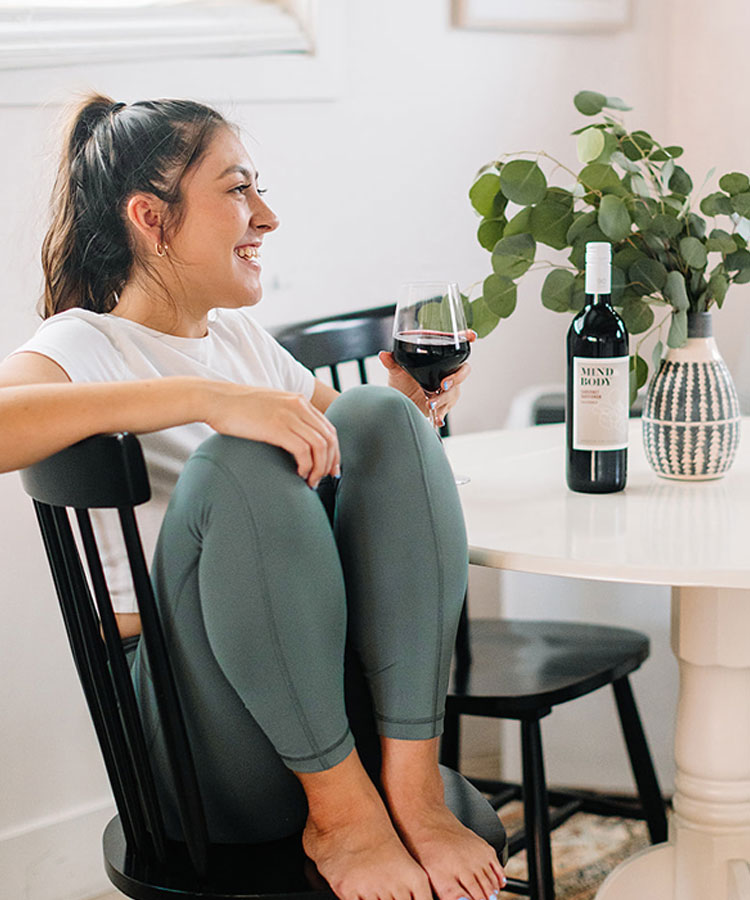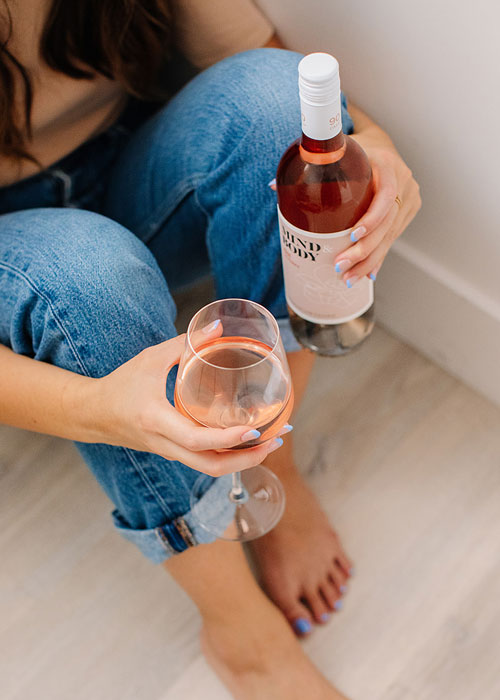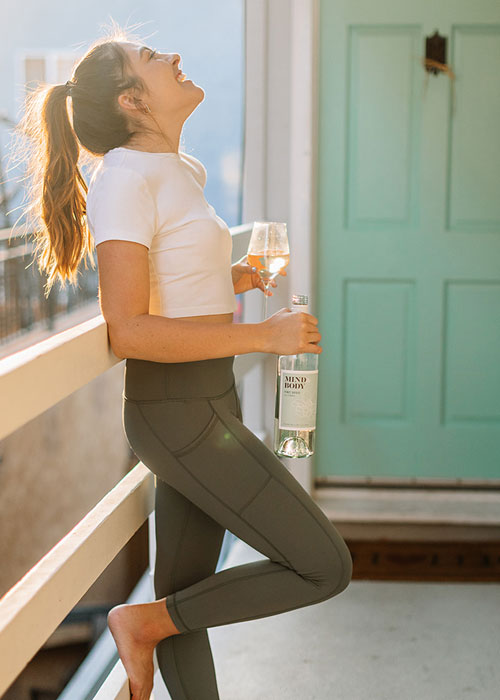
This article is sponsored by Mind & Body Wines.
*Mind & Body Wines per 5 fl oz. Average Analysis: 9.0% Alcohol by Volume, Calories 90, Carbohydrates 4.87g, Fat 0g, Protein <1.0g
In what might be the least surprising news item this year, data giant Nielsen reports that, compared with this time last year, online alcohol sales have doubled and general alcohol sales have increased by more than 20 percent. It’s no secret that we’re spending more time at home, with or without a full household; much less time socializing; and, at a guess, we’re most likely bored or stressed out of our minds.
With alcohol consumption continuing to rise and pandemic pounds becoming a new norm, there’s also been an increased spotlight on the struggle to maintain a healthy and balanced diet while indulging a bit to alleviate tough times. Enter Mind & Body Wines, a collection of low-alcohol and lower-calorie California wines that deliver on taste and quality. The brand offers a trio of guilt-free wines, including a fruity, blended Rosé, a crisp, floral Pinot Grigio, and a robust Cabernet Sauvignon, all fermented in the usual way, with the added step of putting a small portion of the wine through a spinning cone column that dealcoholizes it but leaves its vibrant flavors intact.
Mind & Body wines contain only 90 calories and 9 percent alcohol per 5-ounce serving, around 25 percent lower than the standard estimate of around 120 calories and 12 percent alcohol. Mind & Body wines are also vegan and gluten-free with no added sugar, a boon for discerning drinkers.
We asked nutritionist and Cleo TV chef/host Jernard Wells to weigh in on how to reap the benefits of swapping your usual red, white, or rosé for a lower-calorie choice.
Make It a Lifestyle Change
If there’s one thing that’s been driven home during the lockdown months, it’s that treating yourself can help take the edge off countless daily stressors (endless Zooms, amirite?). But with so much out of our control, Wells advises that there’s no better time than now to pay attention to what we put into our bodies, keeping long-term goals in mind. He says it’s important to allow ourselves the time to let any adjustments we make take effect. “The first 30 or 45 days might seem hard because you’re forcing yourself to change the way you’ve been accustomed to eating or drinking, but once you go into autopilot, these become part of your normal choices and normal decisions,” he says. Another option for anyone looking to streamline even further: Mind & Body’s sister brand, FRE, offers an alcohol-removed wine that contains less than 0.5 percent alcohol, is only 70 calories per 8-ounce glass (the FDA considers 8 ounces to be the serving size for non-alcoholic wines), and is also vegan and gluten-free.
Increase Your Water Intake
“For every 5- to 8-ounce glass of wine you drink, you should be looking at putting anywhere from 20 to 40 ounces of water back into your body to flush it out as best you can,” says Wells. As our bodies are necessarily 60 percent water, it’s important to replace lost fluids to avoid dehydration and to boost such functions as circulation, digestion, and maintaining a healthy body temperature. Drinking lower-alcohol wines, like those from Mind & Body, will keep dehydration at a minimum. An added bonus: Staying hydrated will help you dodge hangover headaches, too.
Moderation Is Your Friend
Lower-calorie wines make it far easier to enjoy a glass (or two) while staying within the daily recommended intake of 1,600 to 2,400 calories for women and 2,000 to 3,000 for men, and refrain from filling your glass with more than the standard serving size of 5 ounces. “If you’re tempted to go with an overly portioned glass, remember that you could save those calories for the next day,” says Wells. “And don’t forget to watch your liquid intake across the board by limiting such sugary options as sodas or sugary juices.”
Watch the Clock
If you want to unwind at the end of a day with a glass (or two) of your favorite wine, that’s fine. But make sure that you keep an eye on the clock, much as you do when it comes to dinnertime or evening snacks, as studies show that having any alcohol just before bed can disrupt your sleep patterns when the sedative effect wears off after a few hours. Similarly, ingesting anything with sugar, natural or not, can increase your energy levels and also create an adverse effect on your sleep, so leave yourself a little time to decompress. “If you drink wine late, just before you go to bed, remember that there’s still some sugar in the wine.” says Wells. “Drink your wine early enough in the evening where there’s been time for it to be absorbed in your system — try at least an hour before you lie down and go to sleep.”
Balance Is Key
Keep in mind that balance is crucial when it comes to a well-rounded and healthy diet and that even if you choose a lower-calorie or low-alcohol wine, anything else you eat or drink will have an impact on your total intake. “At the end of the day, it’s pointless to purchase no-added-sugar or low-sugar or low-alcohol wine if you’re still dumping sugar into your daily coffee or eating a lot of pasta and a lot of starches,” says Wells.
Which is to say, if you’re trying to lose weight and the numbers aren’t changing, it’s not just the wine’s fault. Although Mind & Body wines are Keto and Paleo diet-friendly, consider everything else you’re eating and drinking, too. “Keep track of what you’re consuming during the days that you’re drinking,” says Wells. “And try to put more leafy green veggies into your diet on those days so you get the full benefit of making the lower-sugar choice.”


